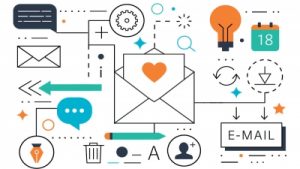
Preparing Your Employees For Success
My daughter is getting ready to start her first job. She is fifteen and will be working in a sporting goods store. Overall, it is a good first job. She is sporty and knows the lingo, she’s hungry to start making her own money, and the store is owned by close family friends that know her.
A first job is a really big first for a teenager. And as her mom, I’m wondering how prepared she is to take this on. I’m wondering if she will be able to balance the job with her school and sports schedule. But as a CX practitioner, I’m wondering if she is prepared for the challenges in being a front-line employee.
While front-line employees tend to be the most junior within the organization, they are actually the most important in terms of customer experience. For my daughter, this means that she really needs to be prepared for a lot of responsibility not only to the company she is working for, but most importantly to their customers.
New employee training always focuses on the tasks of the job – responsibilities of the role. However, there are many more aspects of the job that should be included as part of onboarding training to ensure employee engagement AND customer-centricity.
These “other aspects” are more focused on how to be the best employee they can be for the customer in terms of both empowerment and preparedness.
Here’s the advice that I gave to my friends that are opening their first retail store about how to best prepare their employees to delight customers:
1. Share Business Goals
Each business is looking to meet certain objectives. Many times, these specific goals are not shared broadly across an organization because they are pretty high-level and not specific to employees’ specific responsibilities.
However, sharing goals for the entire business with all employees helps them know what they are helping their employers achieve. Better yet, if employers should share how employees, in their role, impact business objectives, either directly or indirectly, that would be best.
2. Empower Employees
An important driver of a successfully customer-centric culture is empowerment of employees. Specifically, businesses should encourage employees to think beyond specific tasks of the job to focus on what is the right and fair for the customer.
While we do not want employees to “give away the business,” we do want employees to consider customers’ perspective when delivering service or support.
3. Consider the Softer Side of Customer Experience
Perceptions of employees’ performance is always dependent on how well they deliver on the softer side of customer experience. This includes general considerations around empathy, courtesy and friendliness, promptness of service, and knowledge levels.
Train your employees about customer expectations and how best they can deliver on expectations.
4. Be Open to Employee Feedback
Front-line, customer-facing employees are the best source for understanding what is and is not working with customers. These employees can report back the types of questions they receive, complaints about products, services, and delivery, policies or systems that hinder them from doing the right thing for the customer, and areas where customer expectations are not being met.
I strongly encourage any organization to have an unstructured source of Voice of Employee related to what customers’ experience with the business.
At MaritzCX we consult on and implement two distinct type of Voice of Employee (VoE) programs – Employee Engagement and Service Climate.
- Employee Engagement focuses on how engaged employees are with their employer, would they choose to work there again and/or would they likely recommend their employer to others. In short, Employee Engagement is about what matters most to employees and how well their employers deliver on these things.
- Service Climate focuses on how prepared employees feel the organization enables them to deliver a great customer experience. Specifically, from the employees’ perspective have they been properly trained to deliver on customer expectations and does the organization have broader perspectives and strategies related to customer happiness.
These different types of VoE programs support the premise that happy employees lead to happy customers; however, the Service Climate focus takes this perceptive to a deeper level.
Specifically, employees are only going to be happy if they understand and are trained to deliver the best customer experience.
Business & Finance Articles on Business 2 Community
(54)








